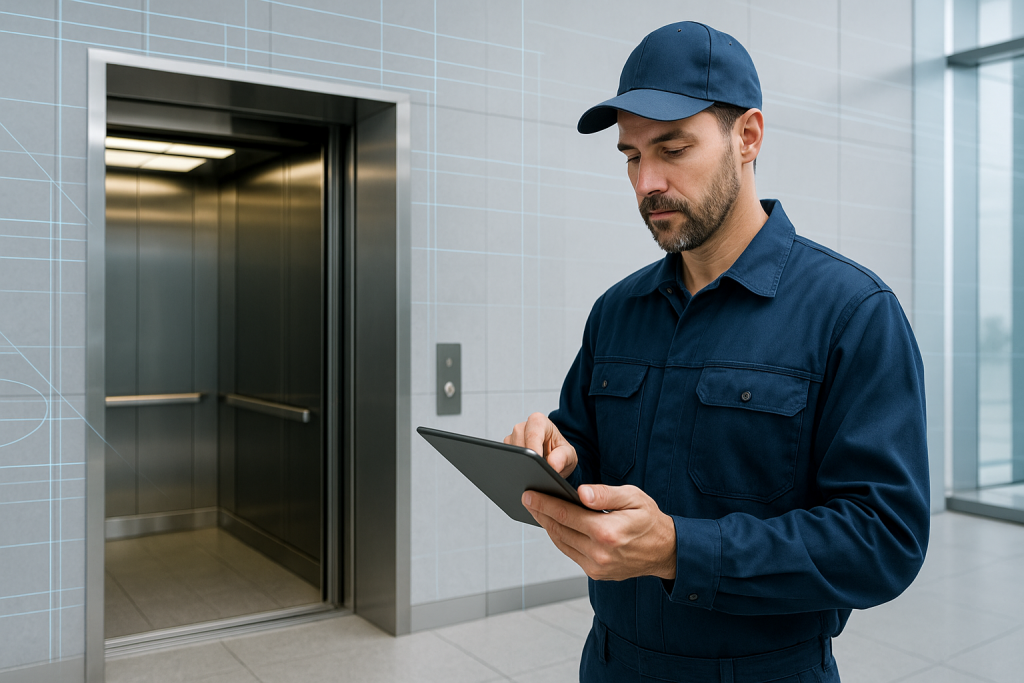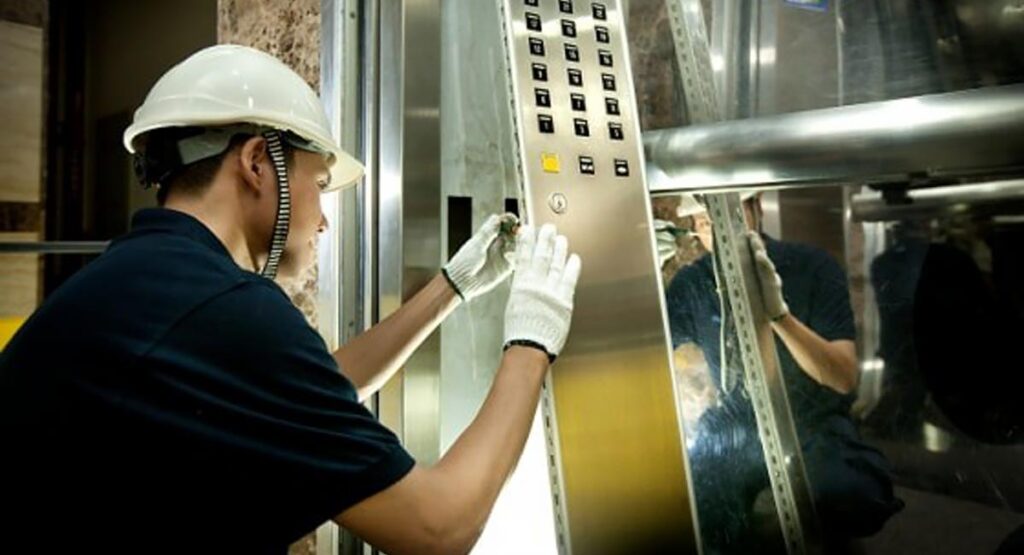Elevators date back to ancient Greek and Roman times, when simple hoists and pulley systems were powered by human effort. Over the centuries, they have evolved dramatically transforming from basic rope lifts into the advanced electric elevators we rely on today.
This progression raises an important question: how safe are elevators? While movies often portray dramatic failures, real-life accidents are far less common. Still, issues such as sudden stops, door malfunctions, or the rare free-fall can and do happen, occasionally leading to injuries.
The most effective way to reduce these risks is through comprehensive lift and elevator audits, which verify that systems remain safe, dependable, and compliant with strict safety regulations.
In the digital age, solutions like Pro-Inspector are reshaping how these audits are performed making them quicker, more precise, and fully transparent. In today’s cities, elevators are essential to daily life, transporting people and goods through residential towers, office blocks, shopping malls, and hospitals. Every trip carries an unspoken commitment: this equipment is safe, reliable, and compliant.
That commitment is upheld through regular inspections and audits, ensuring that safety, performance, and compliance consistently meet the highest standards.
Elevator Accident Statistics
(Source: U.S. Bureau of Labor Statistics, Consumer Product Safety Commission, industry safety reports)
- Elevator-related fatalities in the U.S. average ~30 per year, most involving maintenance personnel rather than passengers.
- Passenger accidents are rare, about 17,000 injuries annually, the majority being minor trips or falls while entering/exiting.
- Maintenance-related accidents are more common, often linked to inadequate lock-out procedures, faulty brakes, or misaligned doors.
- Statistically, elevators are safer than escalators, with fewer injuries per passenger trip.
- The overwhelming majority of incidents are preventable through regular inspections and compliance with safety codes.
What is a Lift or Elevator Audit?

A lift or elevator audit is a systematic evaluation of an elevator or escalator’s safety, performance, and regulatory compliance. Unlike routine maintenance, which focuses on repairs, audits assess the overall condition of the system to ensure it meets required safety codes and industry standards.
Core objectives of an elevator audit:
- Safety Verification – Ensuring brakes, door mechanisms, alarms, and emergency systems are in perfect working condition.
- Regulatory Compliance – Meeting national and international standards like EN 81, ASME A17.1, and local building codes.
- Performance Assessment – Evaluating ride smoothness, travel speed, stopping accuracy, and door operation times.
- Preventive Risk Management – Identifying early signs of wear or faults before they lead to accidents or costly breakdowns.
How Often Are Lift Inspections Required?
- Monthly/Quarterly: Preventive maintenance checks.
- Annually: Mandatory safety inspection by licensed authorities.
- Every 5 Years: Comprehensive full-load/safety test.
- After Repairs: Special inspection before re-use.
In most regions: residential lifts = yearly, commercial/public lifts = every 6 months
Challenges in Traditional Elevator Audits

Despite their importance, many audits still follow outdated, paper-based processes. This creates significant inefficiencies:
- Manual Paperwork – Inspectors spend more time on forms than on actual inspections.
- Delayed Reporting – Reports often take days or weeks to be compiled and shared.
- Inefficient Scheduling – Coordinating inspectors, building managers, and maintenance teams can be chaotic.
- Poor Data Accessibility – Retrieving past inspection records is time-consuming and prone to errors.
- Limited Insights – Without data analytics, recurring issues can go unnoticed until they escalate.
The Rise of Digital Elevator Audits
Digital solutions like Pro-Inspector are addressing these pain points by replacing paper checklists and manual reporting with mobile-first, cloud-enabled inspection platforms. This shift not only speeds up the process but also improves accuracy, transparency, and compliance.
How Pro-Inspector Improves Lift and Elevator Audits
Pro-Inspector is designed to digitally transform field inspections and audits. For elevator and lift safety audits, it offers a comprehensive solution covering everything from scheduling to reporting.
1. Digital, Customizable Checklists
- Pre-loaded templates aligned with global and local elevator safety codes.
- Mandatory fields prevent skipped inspection points.
- Option to switch between elevator and escalator checklists on the spot.
2. Major Time Savings
- A manual elevator inspection typically takes up to 180 minutes.
- With Pro-Inspector, the same inspection is completed in just 80 minutes.
- That means you save 100 minutes per inspection allowing inspectors to cover more lifts in a day.
3. More Inspections, More Revenue
- Since each inspection takes less time, inspectors can complete more audits per day.
- The extra capacity means additional revenue opportunities for the organization.
- At the same time, repetitive administrative work is eliminated.
4. Rapid ROI
- By saving 100 minutes per inspection, organizations reduce manpower costs.
- With inspector costs averaging €6 per hour, that’s about €10 saved per inspection.
- If an inspector performs 5 inspections per day, that adds up to €52 saved daily.
- Many companies see a full return on investment in as little as one day.
5. Real-Time Data Capture
- Inspectors use mobile devices to record photos, videos, notes, and measurements.
- Every entry is time-stamped and geo-tagged for authenticity.
6. Instant Report Generation
- Automated, standards-compliant reports are ready immediately after the inspection.
- No need for manual data entry or document formatting.
7. Cloud-Based Record Keeping
- Secure, searchable storage of all inspection history.
- Quick retrieval for regulatory audits or maintenance reviews.
8. Smart Scheduling
- Bulk scheduling via Excel import.
- Automatic assignment of the right inspector based on location, workload, and expertise.
9. Improved Communication
- Integrated email and SMS alerts for customers, inspectors, and maintenance teams.
- Reduces missed appointments and improves coordination.
10. Offline Functionality
- Inspectors can work without internet access; data syncs automatically later.
11. Analytics and Predictive Maintenance
- Dashboard insights highlight recurring issues and high-risk assets.
- Enables preventive action instead of reactive fixes.
Real-World Example: Bureau Veritas’ Success with Pro-Inspector
While the benefits of digital elevator audits are clear in theory, they become even more compelling when seen in practice.
The Challenge:

Bureau Veritas (BVR), a global leader in testing, inspection, and certification, faced inefficiencies in their lift inspection process. Inspectors spent only 30–40% of their time inspecting lifts—the rest was consumed by planning, paperwork, and reporting. Retrieving historic inspection data was slow, and coordinating multiple stakeholders often led to redundant communications. Completing an inspection cycle could take up to six months.
The Pro-Inspector Solution:
With Pro-Inspector’s mobile, cloud-based platform, BVR:
- Eliminated 100% of manual reporting time – reports are now generated automatically.
- Boosted inspection productivity from 30% to 80%.
- Implemented batch scheduling to assign inspections more efficiently.
- Introduced checklist switching to handle multiple equipment types in one visit.
- Enhanced stakeholder coordination with smart notifications.
- Gave inspectors full access to manuals, checklists, and past inspection data on tablets – both online and offline.
The Results:
- Inspection cycles reduced from months to days.
- Increased daily inspections per inspector.
- Achieved ROI in 3–6 months.
Conclusion: Safety Meets Efficiency
Lift and elevator audits are essential for protecting lives, complying with regulations, and maintaining operational efficiency. But in a fast-paced, high-rise world, paper-based processes can’t keep up.
With Pro-Inspector, elevator audits become digital, data-driven, and proactive – transforming inspections from a compliance burden into a strategic advantage. Whether you operate a single building or manage hundreds of sites globally, embracing digital audit tools is no longer optional – it’s the safest, smartest move you can make.
Ready to digitize your inspections?
Let Pro-Inspector simplify your audits, streamline compliance, and scale operations—no matter your industry.
Also Read: Vendor Audits Explained: Importance, Process, and Best Practices



